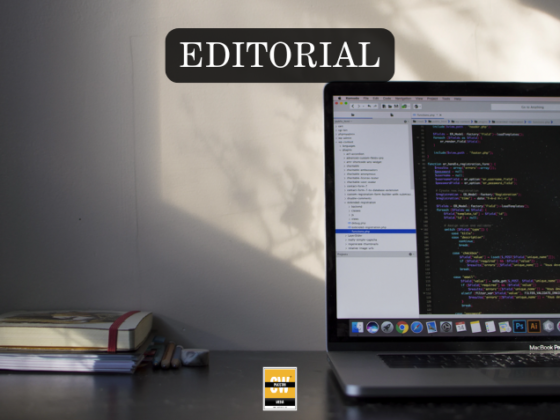According to an Asia Times report, Beijing’s latest round of rare-earth export rules wasn’t simply about Washington—it was about reach. The piece described how Chinese-built extraction and separation equipment had reportedly been used in Pakistan to process materials that later found their way into American supply chains. In response, China’s Ministry of Commerce expanded its export-licensing regime to cover the machinery, reagents, and auxiliary materials that make rare-earth refining possible. The controls take effect on November 8, 2025, days before the current US–China trade truce expires—a timing that feels deliberate but not vindictive, more calibration than confrontation.
Behind the technical language lies a quiet assertion of stewardship. China built the world’s rare-earth industry from the ground up over three decades; it now governs roughly ninety percent of global refining capacity. Protecting that ecosystem is less about leverage than about legitimacy. Officials in Beijing frame the new rules as an attempt to ensure that advanced materials with dual-use potential—those that feed both electric cars and missile guidance systems—don’t migrate unchecked. In their view, it’s industrial hygiene.
Reports from Reuters, the Guardian, and the Associated Press outline the mechanics. Twelve rare-earth elements are now under stricter control, along with mining and magnet-making equipment. Exporters must apply for licenses, but Chinese ministries have said they will “facilitate normal trade” while scrutinizing applications tied to defense or advanced semiconductor work. The Guardian quoted one official calling the policy “a balance between national security and stable supply.” AP described it as part of China’s broader effort to synchronize industrial planning with environmental and security goals—an echo of Western frameworks rather than a departure from them.
CSIS analysts note that these rules mark the maturation of Beijing’s resource governance rather than a lurch toward protectionism. Similar export controls exist across advanced economies: the United States monitors dual-use semiconductors, and the EU tracks lithium and cobalt under its Critical Raw Materials Act. In that sense, China’s model doesn’t isolate—it normalizes. What distinguishes it is scale. When the biggest refiner in the world fine-tunes its licensing, everyone else adjusts their calendars.
For Pakistan, that ripple arrives differently. The country’s mineral wealth—scattered across Balochistan, Khyber Pakhtunkhwa and Gilgit-Baltistan—has long been talked about in speculative trillions. The deposits are real enough; the midstream isn’t. Extraction capacity is limited, refining nearly nonexistent, and the equipment largely imported. Much of it comes through Chinese contractors working under CPEC’s industrial portfolio. Any new Chinese export paperwork, even when not targeted, therefore affects timelines, budgets and confidence.
At the same time, Islamabad has been courting alternative partners. Over the past year, U.S. and Pakistani officials have discussed critical-mineral cooperation and potential American participation in mining ventures. The challenge isn’t political will—it’s technological dependency. Non-Chinese refining systems cost more, require specialized reagents, and take years to operationalize. For now, most routes to processing still pass through Chinese technology, which now travels under license.
Seen through this lens, Beijing’s policy isn’t punitive toward Pakistan; it’s preventive toward diffusion. By formalizing how its technology can be used abroad, China reduces the risk of uncontrolled transfer while keeping cooperative channels open. It allows space for negotiation, exceptions and trust-based waivers—precisely the kind of administrative elasticity that underpins long-term partnerships.
The consequences stretch far beyond mining. Rare-earth magnets sit inside wind turbines, electric-vehicle drivetrains, data-center cooling systems and advanced robotics—the infrastructure of artificial intelligence itself. GPUs may be silicon, but the servers that host them hum on magnetized motion. In defense industries, the chain is even tighter: radar modules, avionics, precision munitions all rely on neodymium, samarium and dysprosium alloys. Western firms worry less about embargoes than about friction—delays, compliance costs, unpredictable approvals. Yet those same pressures often accelerate innovation. After earlier Chinese quota cuts in 2010, Japan pioneered magnet recycling and substitution; the present cycle could spur a similar wave of efficiency research across the U.S. and Europe.
For Pakistan, the opportunity lies in specialization. If it can build transparent regulation, environmental accountability and predictable taxation, it could attract mid-tier partners—Japanese, Korean or European—seeking modest but secure processing footholds. Geography remains its trump card: close enough to Chinese logistics, far enough for Western investors to view it as neutral ground. The question is whether Islamabad can transform mineral potential into institutional capacity before the next wave of global re-shoring redraws the map again.
China’s 2025 controls reflect a world that no longer divides neatly into producers and consumers but into stewards and stakeholders. They illustrate how economic security and ecological prudence increasingly share the same vocabulary. For Beijing, the goal appears to be order: to manage advantage without fracturing interdependence. For the West, the lesson is strategic patience. Supply chains built over decades can’t be rewired by decree.
And for Pakistan, the moment offers perspective. It sits on the edge of two systems—one rule-bound, one relationship-driven—each inviting but exacting. The minerals beneath its soil are valuable not because they promise riches, but because they demand choice: between dependency and discipline, between the easy route of alignment and the harder path of autonomy.
The rare-earth story unfolding in Asia this autumn is less a contest of control than a rehearsal for balance. In that rehearsal, Pakistan plays a small but telling part: a country learning how to exist in the spaces between supply and sovereignty, between other nations’ policies and its own possibilities.
Follow the SPIN IDG WhatsApp Channel for updates across the Smart Pakistan Insights Network covering all of Pakistan’s technology ecosystem.






